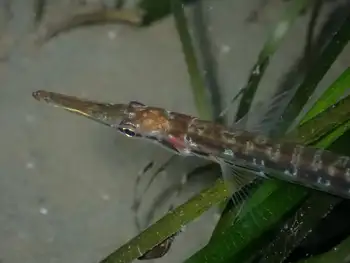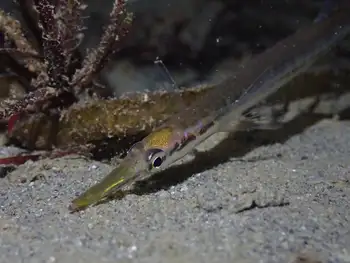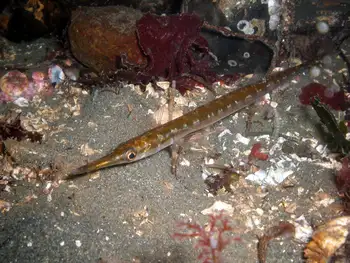Taxonomy
Animalia
Chordata
Actinopterygii
Gasterosteiformes A. Aulorhynchus flavidus
Tubesnout FishYellow Channel-nose Belly-bone-shaped
Gasterosteiformes is an order of ray-finned fishes that includes the sticklebacks and relatives.
In the Gasterosteiformes, the pelvic girdle is never attached to the cleithra directly, and the supramaxillary, orbitosphenoid, and basisphenoid bones are absent. The body is often partly or completely covered with dermal plates.
The name "Gasterosteiformes" means "bone-bellies". It is derived from Ancient Greek gaster (γαστήρ; "stomach", "abdomen") + ostoun (ὀστοῦν; "bone"). The ending for fish orders "-formes" is derived from Latin and indicates "of similar form".
Gasterosteiformes. Retrieved November, 05 2021, from en.wikipedia.org/wiki/Gasterosteiformes.
Aulorhynchus flavidus, the tube-snout, is a species of fish related to the sticklebacks. It is the only species in the genus Aulorhynchus which is the only genus currently recognized in the family Aulorhynchidae.
This species grows to 18 cm (7. 1 in) in total length. It physically resembles the sticklebacks, but has a thinner, longer body, with 24 to 27 small spines in front of the dorsal fin. It also possess a slender snout, hence the common name. Like the sticklebacks, it feeds on small invertebrates and fish larvae. Also, like sticklebacks, it produces a sticky secretion from its kidneys when breeding. Whereas sticklebacks use this secretion to bind plant matter together to create a nest, the tube-snout simply attaches its eggs to a substrate. Aulorhynchus attaches its eggs to kelp, notably Macrocystis pyrifera.
Aulorhynchidae. Retrieved November, 05 2021, from en.wikipedia.org/wiki/Aulorhynchus.


